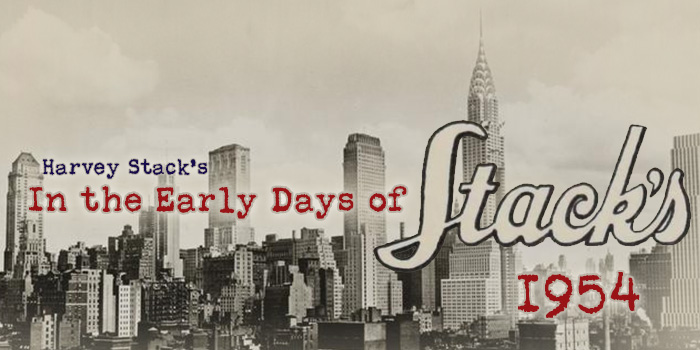
In which yours truly meets not one but TWO numismatic legends
By Harvey Stack – Co-Founder, Stack’s Bowers Galleries …..
Part 1 | Part 2 | Part 3 | Part 4
* * *
The Incredible Year of 1954
As described in a different article, I discussed the acquisition of the Davis-Graves Collection and the Anderson-Dupont Collection in 1953. We had decided to forego going to Egypt for the Farouk Sale in 1954 as we had these two extraordinary collections in house and paid for, and the kitty we were accumulating for the Farouk sale was exhausted.
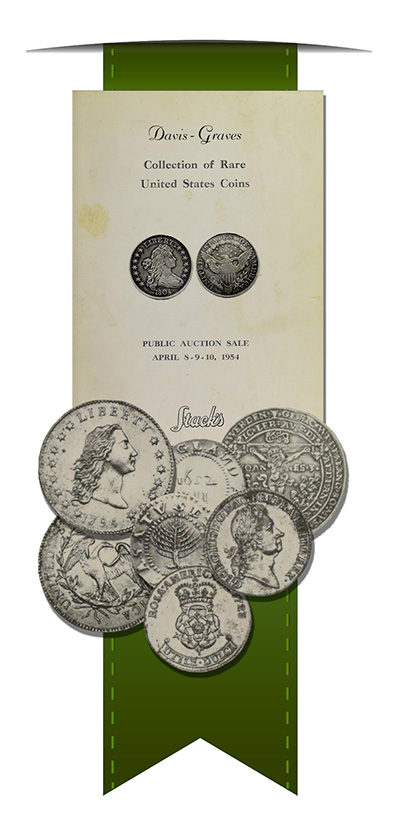 Both collections were outstanding, having gold, silver and copper coinage from America from the day we started to strike coins at our own Mint – but of particular note in both collections were the Large Cents. The Davis-Graves Collection had one from each year or change of design, while the Anderson-Dupont Large Cent collection had many of the rarest and choicest groups to be available for sale in decades.
Both collections were outstanding, having gold, silver and copper coinage from America from the day we started to strike coins at our own Mint – but of particular note in both collections were the Large Cents. The Davis-Graves Collection had one from each year or change of design, while the Anderson-Dupont Large Cent collection had many of the rarest and choicest groups to be available for sale in decades.
In order to get the best cataloging done for the Large Cents, my father and uncle contacted Dr. William Sheldon, who in 1949 published the definitive book on cents entitled U.S. Large Cents. Dr Sheldon had studied and seen most of the important collections during a period of some decade or more that he dedicated to condensing information about dates and varieties, developing a new numbering system for the coins (# sheldon —), a new grading system for the “BIG PENNY” (at least the issues from l793 to 1814), and a new grading system using ADJECTIVE and NUMERICAL grades in tandem. He really did revolutionize the entire classification and collecting of Large Cents.
Being a close friend of Sheldon’s, the two senior Stacks approached him and showed him the two Large Cent collections. To Sheldon, this was the find of the century, as he had neither seen nor recorded either collection before.
“These two collections will force me to revise my earlier book and make a new Condition Census to guide the Cent Collector with,” Dr. Sheldon remarked after he saw them. “Boy would I love to work on these and catalog them!”
My father replied, “Bill, if you want the job and get it done for sales in 1954, YOU GOT THE JOB!” They shook hands and the deal was made.
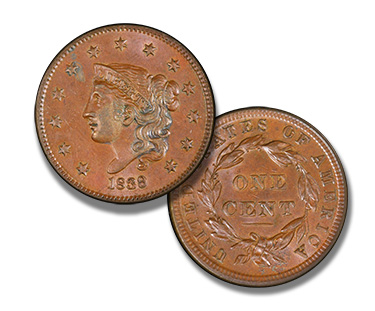 Dr. Sheldon had received a teaching grant from Columbia University about a year before we acquired the two collections, and he lectured till about 5 PM each weekday. The Stack’s plan was simple, and I was put in charge of getting the work done. We made a schedule that Dr. Sheldon would come to our offices on the days that he could, have dinner in our shop (we were located in the Hotel Salisbury and could order room service ahead of time), and work from about 6 PM until 10PM at least three times a week and on Saturdays from 10 AM to 3 PM. C. Douglas Smith, an early date specialist as well as a speed typist, was selected to work with him and help prepare manuscripts. I was to work with both of them to learn more about cents, and when I could did some cataloging of the other coins in each collection. I, for one, saw less of my family than I could imagine, but as Uncle Joe spent so much time on the road and my father worked every day until dinner time, I was in charge of getting the coins from the safe, handing them over to be catalogued, and working and cataloging as the sale was prepared.
Dr. Sheldon had received a teaching grant from Columbia University about a year before we acquired the two collections, and he lectured till about 5 PM each weekday. The Stack’s plan was simple, and I was put in charge of getting the work done. We made a schedule that Dr. Sheldon would come to our offices on the days that he could, have dinner in our shop (we were located in the Hotel Salisbury and could order room service ahead of time), and work from about 6 PM until 10PM at least three times a week and on Saturdays from 10 AM to 3 PM. C. Douglas Smith, an early date specialist as well as a speed typist, was selected to work with him and help prepare manuscripts. I was to work with both of them to learn more about cents, and when I could did some cataloging of the other coins in each collection. I, for one, saw less of my family than I could imagine, but as Uncle Joe spent so much time on the road and my father worked every day until dinner time, I was in charge of getting the coins from the safe, handing them over to be catalogued, and working and cataloging as the sale was prepared.
I learned a lot, having two great Large Cent Specialists as my teachers and being able to hear the discussions they had with each other to learn more about this popular collecting series.
So, since we had planned to sell the Davis-Graves Collection first, that was the group we gave them to catalog. The Davis-Graves collection was unusual: it basically had one coin from each year as its goal. In addition, in certain series (like U.S. Gold Coins) their were runs of the various mint marks to enhance each one. But overall it had in the various series at least one from each year of issue, not necessarily striving to be a complete set including all mint marks but when possible yes, the collection added mint mark coins.
It was an unusual way to collect, but that was how it was done.
The collection had year-series runs in Half Cents thru the silver dollar, and in gold from the dollar to the $20 double eagle (no $4 gold stellas, however). It also featured an eccentric run of Foreign and Ancient gold, silver and copper, highlighted by a Polish 100 Gold Ducat 1621, one of the largest gold coins ever struck.
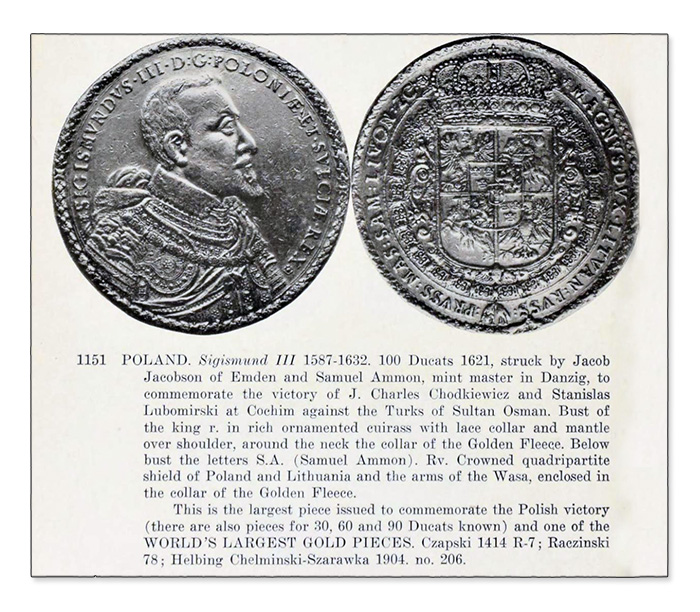
Knowing that coins from the Farouk sale, held in the Spring of 1954 in Cairo, would soon be coming to market in the United States from dealers like Hans M F. Schulman, Abe Kosoff and others, we wanted to get this sale done in order to create inventory for all the collectors who would not or could not participate in the Farouk sale.
To give you some of the highlights of the Davis-Graves Collection, it had choice half cents including Proofs; a run of Large Cents with seven different varieties from 1793–including one of the finest-known 1793 Cap Cents; a splendid die collection of 1794; coins from 1794 in all metals, highlighted by the R. Coulton Davis 1804 silver dollar; all the minor coins, mostly Proof; quarters, including 1796, 1804, 1815, 1819, 1823, both 1827 varieties, and many Proofs; half dollars from 1794, l796 and l797, along with many Mint State and Proof through to 1923; and silver dollars, including from 1794, varieties to 1804, and one per year from l836 to 1921.
In Gold, the collection featured a date set run from $1.00 to $20.00, highlighted by 1796, 1808, 1854 “S” quarter eagles; early $5.00 gold from 1795, 1796, 1798 Small Eagles, 1815, 1819 and many others. There were similar arrays of $10 and $20 Gold, plus a super selection of Pioneer and Territorial gold coins.
As you can see, the Davis-Graves sale was one of great variety and quality. It attracted hundreds of floor bidders and a record amount of mail and phone bids. It was held in Steinway Hall, the NYC concert hall and one of Stack’s neighbors on 57th Street.
I met many new collectors and dealers who attended this sale and made particularly close friends with a young and sharp up-and-coming dealer who bought the first rare coin from me at Stack’s.
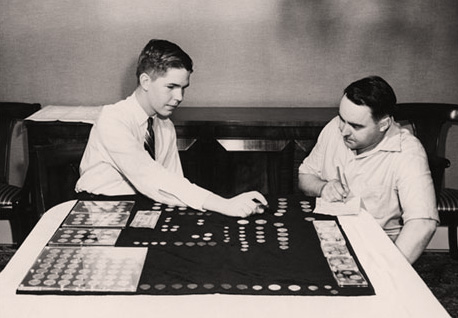
It was Q. DAVID BOWERS.
He was bright and wanted to learn how a firm like Stack’s functioned. For example, prior to each session of our sales, David would “pitch in” and help us carry the needed auction material from our shop to the auction room, and he would even help set it up. When each session was over, Dave would help the staff pack up and take the material back to our offices. We became close friends, though we lived far apart. But in 2006, with the desire to enlarge both of our operations, we joined forces and today it is STACK’S BOWERS who serves you.
* * *




